








Nestled along Noel C. Conway Road in picturesque Guyton, Georgia, The Venue at Miller Chapel stands as a testament to thoughtful preservation and modern sophistication.
This stunning landmark seamlessly blends historical charm with contemporary amenities, creating an unforgettable setting.
The meticulously restored chapel showcases authentic period features that have been carefully preserved while infusing new vitality into every detail. Original pews and flooring remain intact, offering guests a genuine glimpse into Effingham County's rich cultural heritage. The restoration process honored the chapel's historic integrity while ensuring modern comfort for today's celebrations.

Beyond the chapel's elegant interior, the venue offers an expansive event space accommodating up to 180 guests. This versatile area features state-of-the-art acoustics, a sophisticated bar setup, and a luxurious bridal suite that exceeds expectations. The thoughtful design crefates a perfect balance between historic architecture and contemporary functionality.
The grounds surrounding The Venue at Miller Chapel are equally impressive, featuring a manicured wedding lawn that serves as a natural extension of the indoor spaces. A magnificent shade tree provides a picturesque backdrop, while a custom brick wall and beautifully designed walking path create
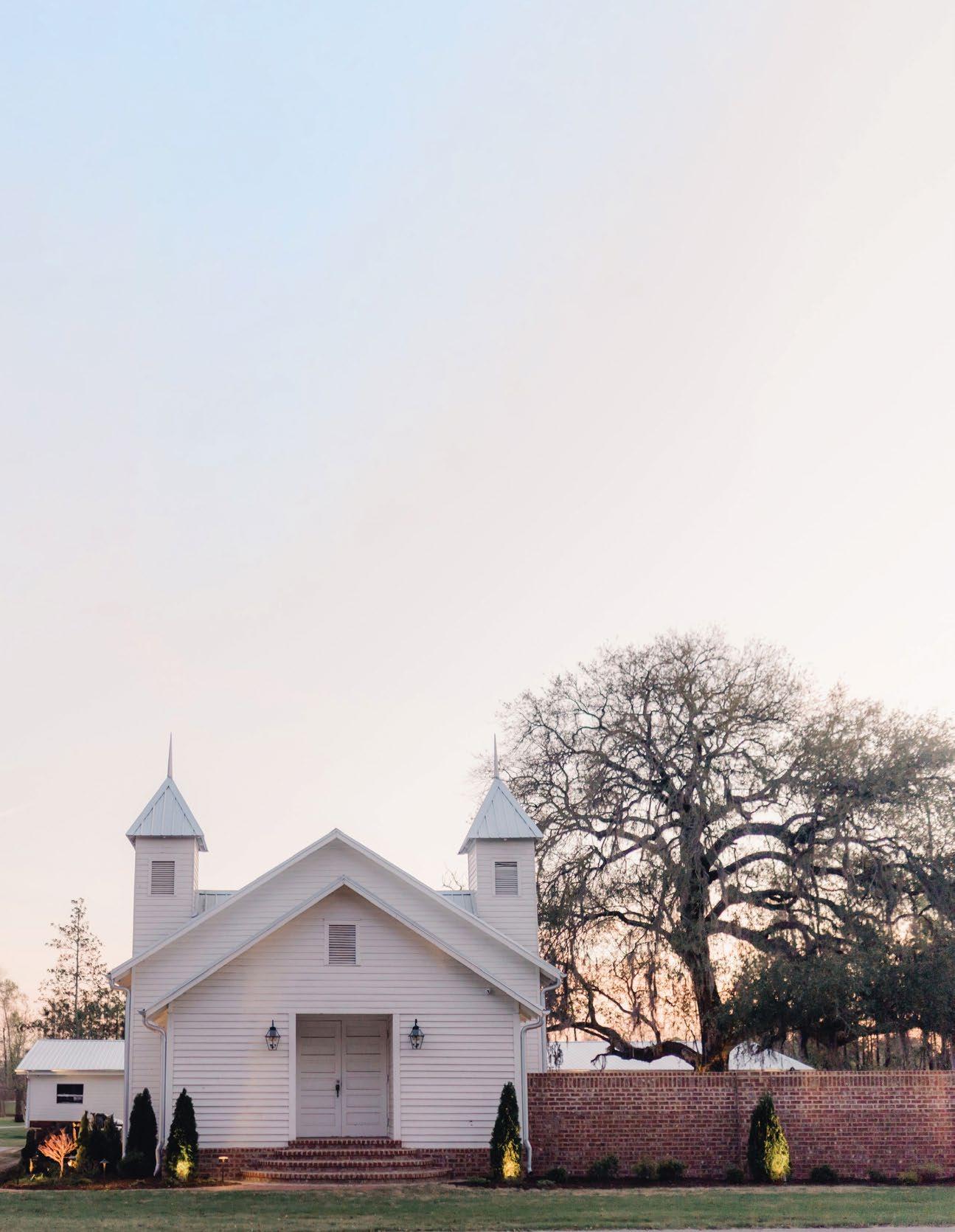
the perfect setting for grand entrances and outdoor celebrations. This carefully landscaped environment offers numerous possibilities for both ceremonies and receptions.
Whether hosting a wedding, corporate event, or special celebration, the venue provides an atmosphere of refined elegance. The combination of historical elements with modern amenities ensures every event benefits from both timeless charm and contemporary convenience. The venue's layout allows for seamless flow between indoor and outdoor spaces, accommodating various event styles and sizes.
The Venue at Miller Chapel stands as more than just an event space. From its historic chapel to its modern amenities and beautiful grounds, this new local venue offers an exceptional setting for those seeking a unique blend of Southern charm and contemporary sophistication in the heart of Effingham County.



1. Alycia Calderin is a Florida native who moved to Georgia in 2013, where she planted roots with her husband of 16 years. When she’s not balancing the whirlwind of activities for her four kids, she escapes into the world of books.
2. Heather Highcove has been married to Roger for almost 40 years, and they have 4 children and 7 grandchildren. Born in the D.C. area and raised in Jacksonville, Fla., she is a very southern Floridian. Healther loves cooking, crafting, thrifting and collecting antiques.
3. Leidy Lester is a freelance photographer, originally from Bogota, Colombia. One of her proudest achievements was working with models and highly experienced photographers in Las Vegas.
4. Gail Mihalik lives in Rincon with Scott, her high school sweetheart, and their two rescue dogs. Chef by trade with over 50 years of experience, she spends most of her time living, loving, and sharing the history and culture of the area.
5. Scott Douglas Miller is a broadcaster celebrating 50 years in radio as an air personality, news director, event DJ and content provider several publications. Originally from Mississippi, Scott shares a home in Rincon with his sweetheart, Gail.
6. Gail Parsons has more than 30 years of experience as a writer. In 2023, she and her husband fulfilled their dream to move to Savannah and have settled in Rincon. She is also an artist and enjoys traveling and spending time at the beach.
7. Cindy Reid has been a freelance writer for over 15 years. She has been published extensively in Effingham Magazine, Pooler Magazine, and other lifestyle magazines. A native of New York’s Hudson Valley, she embodies the saying “I wasn’t born in the South but I got here as soon as I could.”
8. Claire Sandow is a marketing professional who lives in Savannah with her husband, daughter and cat. In her spare time, she enjoys pursuing her many hobbies, including knitting, crocheting, quilting and running.
9. Laura Zielinski is a freelance graphic designer specializing in print design. With more than 17 years’ experience, Laura enjoys shaping stories through meaningful design. When she’s not working, she loves spending time with her husband Keith and their three beautiful children.
10. Mabel, morale officer, enjoys roaming the backyard at home, sitting for hours on the back porch and coming to the office to greet visitors and encourage the staff. Mabel loves getting treats and taking long naps in her mommy’s office in the afternoons.







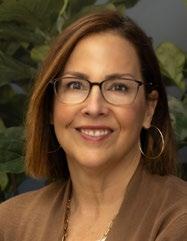




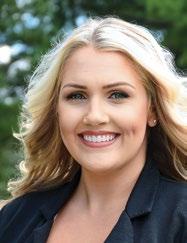





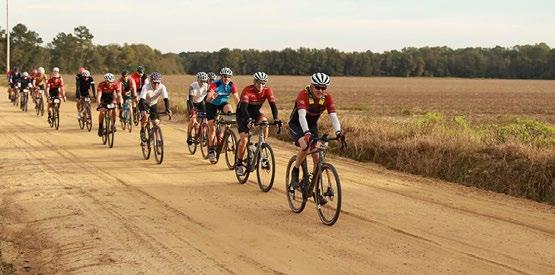


that would appeal to children and create a sense of magic within the garden.
In addition to replanting, Hanson said they hope to renew plans for a walkway dedicated to Frances Meeks, who founded the Garden Club in 1955.
“We want to get it back to where people can come out and read a book or just plain enjoy it,” she said.
For Hanson and other club members working on the garden, it is about more than just planting flowers—it’s about preserving a space for future generations. Her motivation comes from having something to do outside and something fun to do with her grandchildren.
“I get a little therapy in the dirt and my grandkids come out to help,” she said
Being members of the club allows them to learn and share their knowledge. The club meets from January through April, September, and November with a holiday luncheon in December and an end-of-the-year luncheon in June.
“Through guest speakers, field trips, projects, social events, and, more recently, social media, we are a source of both fellowship, community service, and education in the south Bryan County, Georgia area,” said member Gloria Shearin. “Our membership is a diverse mix of backgrounds, ages, and gardening experience and is open to anyone who wants to interact with others who share a common interest in gardening.”
Kelly Hoffner, vice president and membership chair said membership in the club is growing with an average of six new members attending each meeting.
She attributes the growth to the club’s community involvement. They host two public events—a pumpkin patch in October and a plant sale in the spring. Both events raise funds, which they reinvest in their projects and donate to several local organizations including
Bryan County Health and Rehab, the Way Station food pantry, and the Soup Kitchen. They also support the Wreaths for Warriors program and have worked with the city on the Blue Star Marker refurbishment project in Gregory Park.
The Blue Star marker was originally installed by the Oleander District of the Garden Club of Georgia, of which the Richmond Hill Club is a part, said member Linda Allison.
“We're going to put plants around the sign,” she said. “Maybe red, white, and blue; but first we have to talk to the gentleman with EOM that takes care of the park to find out what we can do. If we can’t plant, then we'll put planters with native plants.”
Whatever they settle on, it will be another project in Richmond Hill for the club members to get behind and work on with a shared passion.
Jose Luis Medina, master gardener, said his passion for gardening comes from his love for the outdoors and biodiversity. But he didn’t learn how much he loved it until he moved to Richmond Hill.
“I was born and raised in Brooklyn, New York,” he said. “I’m retired military, and I was an industrial firefighter. I didn’t learn any of this until purchased my first home here 35 years ago.”
When he discovered the Garden Club, he said he was welcomed with open arms and felt right at home.
“When they need my help, they call me, and I love helping them, and I love working for the community and the schools,” he said. “I love working at Frances Meeks, and I've also worked at other schools.”
Additionally, he works at the Children's Garden at the Savannah Botanical Garden and the University of Georgia Extension’s Bamboo Farms and is a member of the Savannah Day Lilly Society the day.
For more information about the Richmond Hill Garden Club, people can visit their Facebook page. ■



by Alycia Calderin
Pinterest® moms may have their perfectly curated playrooms and color-coded bins, but let’s talk about the real mom life aesthetic. It’s unbrushed hair (ours and theirs), kids barefoot in the yard, sticky with popsicle residue, while you sip another cup of lukewarm coffee, praying it gets you through the chaos.
Forget Pinterest perfection. Our lives are a mash-up of survival instincts, mismatched socks, and a touch of desperation.
Here’s the thing: that’s okay. More than okay. It’s normal. Most days, we wouldn’t have it any other way.
In some imaginary world (probably Instagram), moms wake up at 5 a.m. for yoga, pour artisanal coffee, and serve photo-worthy pancakes with a smile. Meanwhile, my kids are arguing over who breathed on whom while I’m reminding everyone to put on pants before school.
Breakfast at my house? Less “homey farmhouse aesthetic,” more “wildlife documentary.” The youngest eats waffles upside down on the couch. The middle child is running a spoon-based taste test. The teen’s eating chips because “they’re basically potatoes, Mom.” I’m in the car line yelling, “WHERE IS YOUR BACKPACK?” while avoiding eye contact with the teacher trying to chat before my caffeine hits.
And let’s talk about the most universal symbol of mom life: lukewarm coffee. It starts hot and hopeful. But somewhere between packing lunches, finding shoes, and shouting homework reminders, it sits forgotten.
Eventually, you take a sip and instantly regret it. That once-steaming ambition is now a sad puddle of caffeine.
And yet, we drink it. Because it’s not about the temperature—it’s the ritual.
No matter how many parenting books or blogs you consume, kids are gonna be kids. By that, I mean semi-feral beings.
Toddlers are cute-feral, running naked in the yard, hoarding rocks like currency, yelling “I DO IT MYSELF!” before spilling an entire gallon of milk.
Elementary-aged kids? Slightly more advanced feral. Climbing trees, building forts from couch cushions, arguing that playing Roblox counts as socializing.
Teenagers? Their feral energy is emotional. Glued to their phones, texting in hieroglyphics, eating everything except the food you made. They’re not technically feral anymore, but they still look at you like you’re speaking a foreign language when you ask them to clean their room. Or worse—when you’re teaching them to drive and they’re convinced they’re ready for the Daytona 500.
The mom life aesthetic isn’t just lukewarm coffee and feral kids—it’s a vibe. Leggings with questionable stains? Check. Messy bun? Double check. We’re not making a fashion statement; we’re surviving.
There’s power in the messy bun. Confidence in mismatched socks—hey, at least you found socks. And the universal mom accessory? Under-eye bags. We wear them like battle scars.
Here’s the truth: feral kids and lukewarm coffee mean you’re doing it right. Spotless kitchens don’t tell the story of a life lived. Sticky handprints, laundry mountains, floors covered in mystery crumbs and glitter? That’s the real mom life aesthetic.
It’s easy to feel like you’re failing when social media shows highlight reels. But

no one’s posting when their toddler colored on the dog with a Sharpie ® or their teen skipped deodorant for a week because “it’s a free country.”
It’s not picture perfect. It’s beautifully imperfect. A little bit feral, a little bit sticky, and a whole lot of love.
The beauty of mom life is in the chaos. In the tiny arms wrapped around your neck after a tantrum. In the rare moment your teenager laughs at your joke.
Sure, it’s not glamorous. We’re running on caffeine and willpower, raising wild kids, trying to find time for ourselves. But in the mess, there’s magic. It’s raw, real, and ours.
So here’s to the moms making it work—one cold coffee at a time. Embrace the humor, the chaos, the pride in just getting through.
Motherhood doesn’t need a filter to be beautiful. It’s beautiful because it’s real. So grab that half-finished coffee, let the kids run wild, and know—you’re doing an incredible job.
One day, you’ll look back and realize these messy, noisy, exhausting moments were the ones that mattered most. That’s a vibe worth celebrating.
And if anyone questions your parenting aesthetic, just tell them: “It’s feral chic.”
Sponsored by
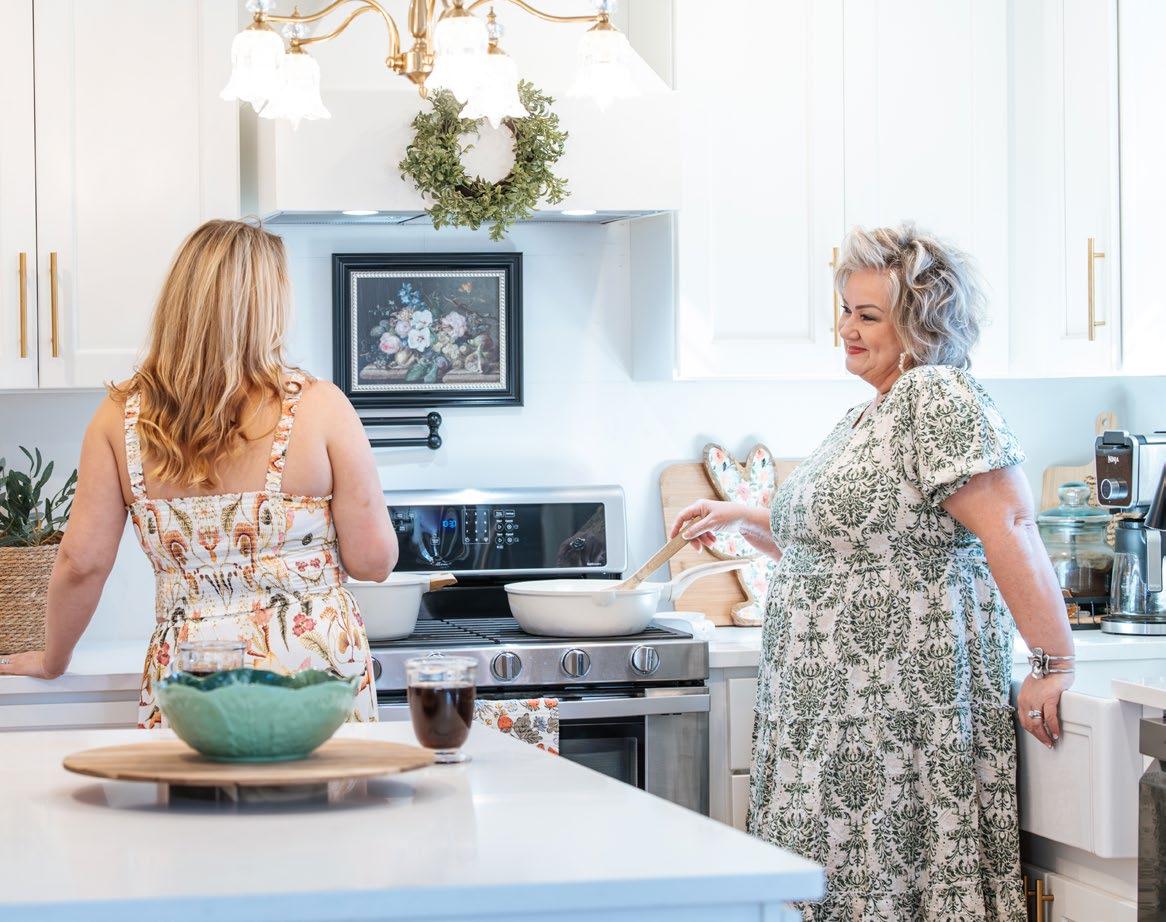
here and, later, our grandchildren. We’ve shared memories with our parents here. My mom even had input on some design choices, and I cherish those memories. Our youngest son lived with us until we lost him in an accident in 2015. It took me seven years to touch his room. It remained untouched until I was ready. Today, it’s a quiet office for my husband. His former office downstairs has been transformed into a magnificent craft room for me. It’s colorful and eclectic, much more so than the rest of our home. When our grandkids visit, they head straight for the pantry, then to the craft room. We’ve spent countless hours painting, crafting, and playing games there. I hope they carry fond memories of this house after we’re long gone. I hope
they drive by and remember all the joy we shared.
When we built this house, dark wood and old-world Italian decor were trendy. Green, red, and gold were the colors of the era. But I longed for a big country home,
I hope our [grandkids] carry fond memories of this house after we’re long gone. I hope they drive by and remember all the joy we shared. “ “
so that’s what we built. In the 20+ years we’ve lived here, our decor has evolved, but I always come back to my roots: vintage, old antiques, and things with stories. I’d say 90% of my decor is either thrifted, heirlooms, or handmade. It’s not everyone’s cup of tea, but it’s mine.
I’m no longer concerned with design trends. They come and go. A few years back, I purged 75% of our home. The Salvation Army was my best customer! Every week, they’d load up a truck of things I had thrifted or been given. But I soon came to my senses when I found myself repurchasing some of my own items at local thrift stores! It was then I decided to embrace what I love and make my home my sanctuary.
A home should represent your personality. My things aren’t perfect, but neither am I. I love to decorate seasonally and change things up to keep it interesting. As I write this, it’s midJanuary. I’m still “January-ing”—keeping ten Christmas trees up with lights and icicles, lots of greenery, and white candles in the windows. It helps ward off the











» MORE community information
» MORE events & happenings
» MORE great stories about people, places and events from Your Community Magazine.

THANK YOU TO OUR COMMUNITY SPONSORS:




New to the Savannah area, just discovering your inner gardener, or ready to give your garden another shot? You’re in the right place! We’ve put together some game-changing tips to get your garden thriving this spring and summer season.
Savannah’s unique coastal climate and lengthy growing season make it an ideal location for both novice and experienced gardeners. With proper planning and care, you can maintain a thriving garden nearly year-round in beautiful coastal Georgia. Here’s your comprehensive guide to successful gardening in the Coastal Empire.
The Greater Savannah area enjoys an extended frost-free growing season that typically runs from March 1 to November 25, providing gardeners with approximately 269 days to cultivate their plants. The last spring frost usually occurs around March 12, making mid-March an ideal time to begin your spring planting efforts.
The gardening calendar features two major planting periods:
Spring (March to May):
• Early March: Start indoor seeds for cool-season crops like broccoli, cabbage, and lettuce
• Mid-March to Early May: Plant warm-season vegetables such as tomatoes and peppers

• Late March: Begin planting hardy vegetables like peas, carrots, and radishes
• April: Ideal time for warm-season annual flowers including zinnias, impatiens, and salvias
Fall (Mid-July to September):
• Mid-July to Early August: Plant cool-season crops
• August to September: Focus on root vegetables like beets, carrots, and turnips
• Early fall: Plant leafy greens and brassicas for winter harvests
Savannah’s soil requires specific attention for optimal growing conditions:
1. Soil Testing: Before planting, test your soil to determine pH levels and nutrient content
2. Soil Amendment: Add organic matter to improve soil structure and drainage
3. Mulching: Apply mulch to retain moisture and regulate soil temperature
4. Fertilization: Use slow-release fertilizers in late March or early April for sustained nutrition
Choose plants that thrive in Savannah’s subtropical climate:
Vegetables:
• Spring: Tomatoes, bell peppers, cucumbers, squash
• Summer: Okra, eggplant, sweet potatoes
• Fall: Collards, kale, turnips, carrots
• Winter: Garlic, onions, leafy greens

Flowers:
• Spring: Asters, calendulas, cosmos
• Summer: Zinnias, salvias, marigolds
• Fall: Chrysanthemums, pansies
• Year-round: Native perennials
Essential Care Tips
1. Watering:
• Water deeply but less frequently to encourage deep root growth
• Water early morning to prevent fungal issues
• Use mulch to retain moisture in summer heat
2. Pest Management:
• Monitor for common local pests like aphids and caterpillars
• Implement companion planting strategies
• Use organic pest control methods when possible
3. Weather Considerations:
• Protect plants from occasional late frosts in spring
• Provide afternoon shade during intense summer heat
• Prepare for tropical storms during hurricane season
4. Maintenance Schedule:
• Regular weeding, especially during peak growing seasons
• Monthly fertilization during active growing periods
• Pruning and deadheading as needed
1. Start Small: Begin with a manageable garden size
2. Choose Easy Plants: Begin with foolproof options like herbs and cherry tomatoes
3. Keep Records: Document planting dates, successes, and challenges
4. Join Local Groups: Connect with Savannah’s gardening community for support



Blackcreek Nursery and Garden, Ellabell blackceeknursery.com
Elmgren’s Services and Nursesry, Richmondhill elmgrensservices.com
Wise Nurseries, Pembroke wisenurseries.weebly.com
Tim & Dave’s Nursery, Richmondhill richmondhillnursery.com
Olde Savannah Gardens, Pooler oldesavannah.com
Pooler Plant Pick-up Station, Pooler poolerplants.com
Chatham Nurseries, Inc, Bloomingdale chathamnurseries.com
Cobia Clarke Nursery, Savannah cobiaclarkenursery.com
Greenhouse Gardens Organic Nursery, Savannah facebook.com/greenhousegardens
Herb Creek, Savannah herbcreek.com
Hester and Zipperer, Savannah facebook.com/zipperergardens
Savannah Hydroponics and Organics, Savannah savannahhydro.com
Southern Marsh Nursery, Port Wentworth coastalnurseryga.com
Savannah’s Secret Gardens, Savannah savannahsecretgardens.com
Savannah Victory Gardens, Savannah savannahvictorygardens.com
Ebenezer Rose and Garden Nursery, Rincon ebenezerrose.com
Rhan’s Greenhouse, Springfield www.rahnsgreenhouses.com
Wright’s Market, Rincon wright-market.com

What if you could actually ride your bike or walk from one side of Georgia to the other on a smooth paved trail that went through charming Southern towns with ample opportunity to learn local history, enjoy a meal or even spend the night?
That describes the Georgia Hi-Lo Trail, a work in progress that will ultimately be a 211 mile paved path from Athens to Savannah that winds through East Central Georgia.
The Hi-Lo Trail will be much more than a nature or bike trail because it is driven by the urge to connect communities to the users of the trail. Some of it will be nature, some will be small town, and some will be more urban. Stretching from Sparta, to Tybee Beach, everything that makes Georgia unique will be incorporated into the trail. Think old train depots, shops and restaurants, small town murals and stately courthouses.
Because the Trail will be paved it can be used by runners, strollers, wheelchairs users, bicycles, rollerbladers, leashed dogs, and walkers of all ages. That is the essence of the Hi-Lo Trail, the community spirit of having something literally everyone can use. Creating America’s longest paved trail will of course take time. But the work has started.
The Visionary
Executive Director Mary Charles
Howard is the visionary. Born and raised in the small town Sandersville, Ga., she left to pursue higher education and a professional career as a landscape architect. Eventually she returned to her hometown with her family.
“We were back home but we had left trails behind and had nowhere to walk or bike,” Mary says.
Furthermore, she saw that other families were returning to their hometowns, and new residents were discovering the beautiful homes that could be had for a much lower price than in an urban or suburban area. She thought they too could benefit from a walking or bike trail.
“With the advent of remote work, I saw a return to small towns, and I thought that bringing some benefits of urban life, such as a paved trail, to a rural setting could possibly revitalize these rural communities.”
The trail she was designing would wind through towns along the way where visitors would experience local points of interest and spend money at restaurants and shops. It was important to her that


visitors and residents interact and share their stories. Mary was clear that the trail needed to be paved to make it accessible for everyone.
“I envisioned multi-generational users, grandparents, parents, kids and special needs folks, who often face barriers accessing the outdoors.”
She launched the project in 2019 with the thought that she could do it herself. “I had focused on trail design as a landscape architect, but I soon saw the complexity and scope of the project would require a team, ideally one with experience.”
Enter the PATH Foundation.



points of interest such as the Effingham ball fields, as well as connect to restrooms.
People can help the Hi-Lo Trail project in a few different ways.
• PayPal Giving Fund by selecting it as your favorite charity on PayPal Giving Fund
• Athens to Savannah Ride - The Athens to Savannah Ride supports the Georgia Hi-Lo Trail by raising awareness and funds
• Volunteer for the Effingham County Bike League
• Donate new helmets for the bike league
• Check the Facebook page for current fundraisers Volunteers are crucial to the ongoing work and success of the Hi-Lo Trail. “Our team sacrifices weekends and summers with their families to make dreams happen for the Trail, for the Kids Bike League, and for the Athens to Savannah Ride,” says Mary, “It takes many early mornings and late nights. We are truly grateful for all the hours, days, months and years invested in this vision that is coming to life and changing the lives of kids as we go.”
Mary says she wants residents to know, “The Georgia Hi-Lo Trail is connecting rural Georgia communities with a world-class trail while creating economic opportunities and outdoor adventures for all. If people can see the entire project, they will see it’s not about the trail, it’s about the community and it’s about seeing each other. We are working hard to empower rural Georgia and ensure all the benefits come full circle.” ■

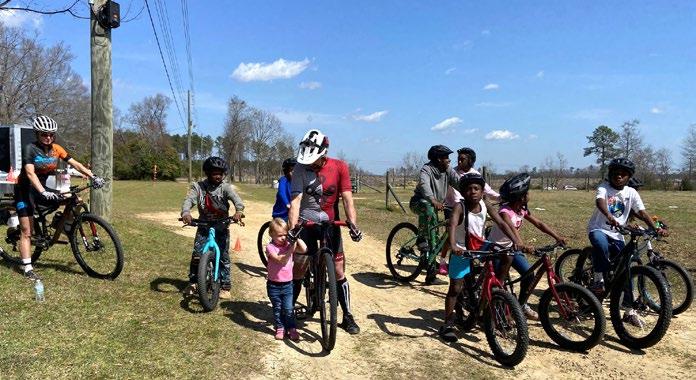
The daughter of an Olympic swimmer, Angela swam competitively until a scoliosis surgery ended her career. Her two daughters both followed in the family’s footsteps, and when 11 year-old Nola developed signs that Angela feared might signal the onset of scoliosis, she brought her to St. Joseph’s/Candler.

Dr. Steven Greer, a musculoskeletal physician specializing in sports medicine, diagnosed Nola with a 2cm leg-length discrepancy. He understood how much competitive swimming meant to the family. Because his approach involves identifying noninvasive therapies to delay or prevent surgery whenever possible, his solution was relatively simple—Orthotics would give her the support she needed. Today Nola continues to pursue the sport she loves, as Dr. Greer continues to treat the entire family.
“My goal is to help patients get where they want to be in life with as minimal intervention as possible, whenever possible.” – Dr. Greer
“THAT’S WHY I CHOOSE ST. JOSEPH’S/CANDLER”
– Steven Greer, M.D. – Musculoskeletal Specialist